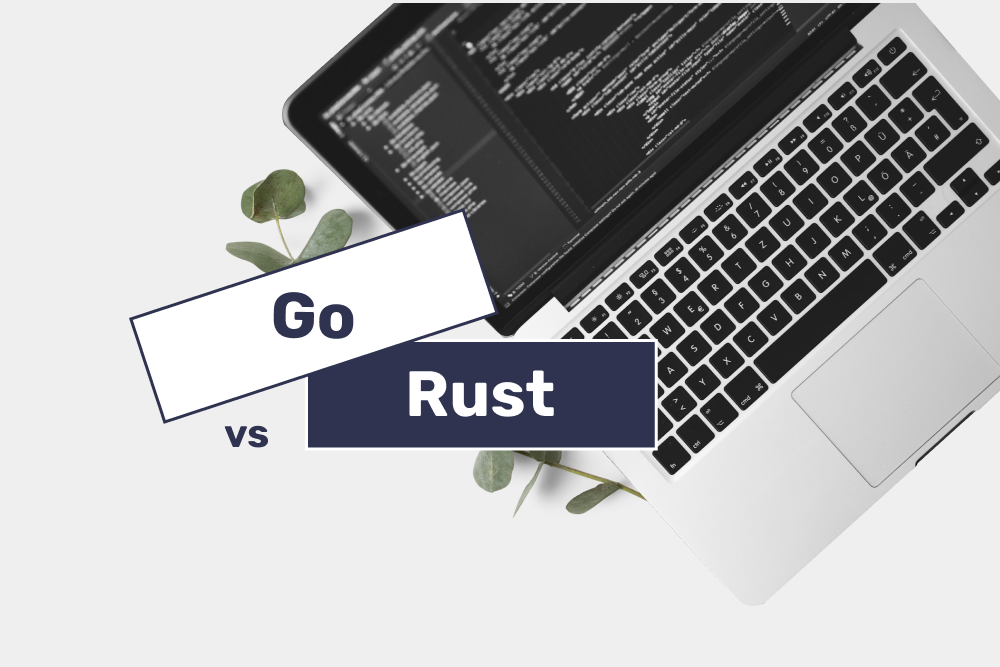TIOBE Index for July 2023 covers fifty programming languages, where Go and Rust take 13th and 17th place respectively. Of course, when picking the technology for your startup, you don’t have to consider all languages available, but choosing between even two ‒ Go or Rust ‒ might become a tough nut to crack.
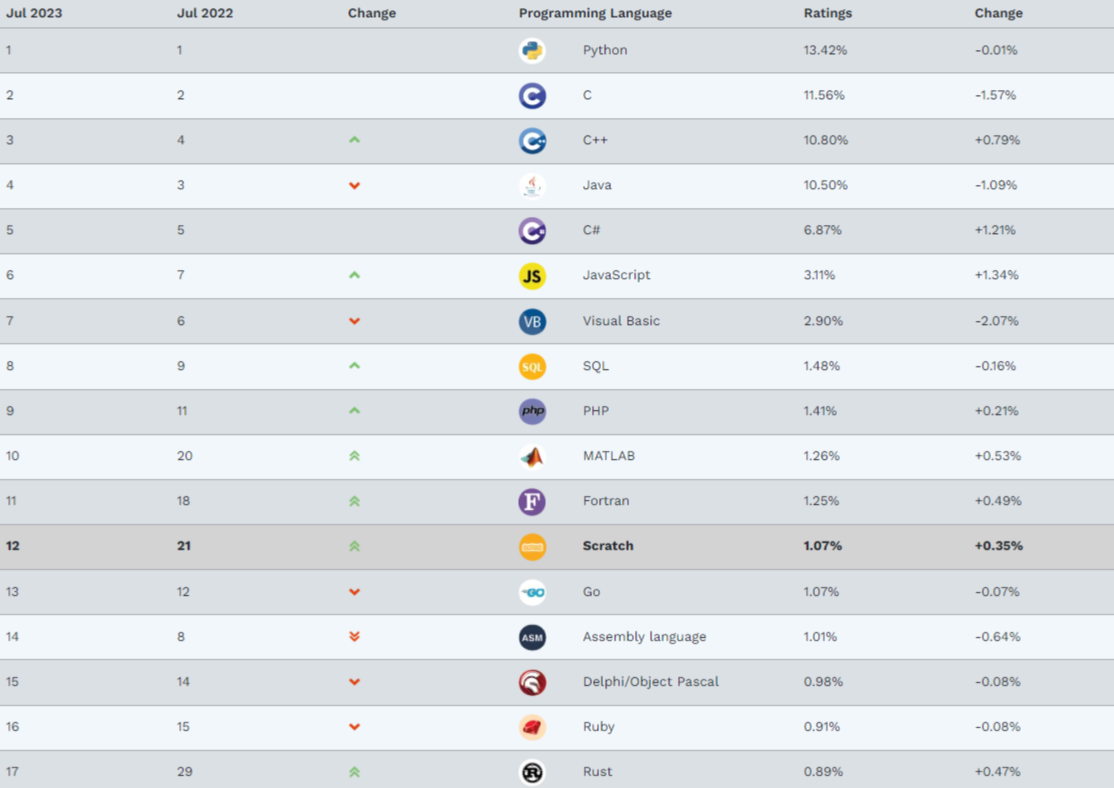
Rust and Go are the two most powerful and versatile programming languages of the past decade, and they have a lot in common. For instance, Go and Rust are compiled programming languages, making them appropriate for different types of projects and performance-critical applications. Both languages prioritize memory safety, which prevents bugs and security vulnerabilities, and are suitable for development at scale, offering tools for large codebases and teams.
But apart from similarities, these languages also come with major differences that should be carefully considered when making the final choice. As a mature recruitment company, we know that the technology choice might seriously affect your project’s success, just like finding the right talent. At Bridge, our recruiters are well-versed in the latest tech and clearly understand what skills to focus on when sourcing either Rust or Go coders.
To help you make an informed decision and pick the right technology, we’ve compared Rust and Go in terms of simplicity, concurrency, safety, and more. So without any delays, let’s dive into the comparison.
Go vs Rust comparison
When considering Rust vs Go to pick the tech for your startup, first off, you should think of your project requirements and the goals you plan to achieve. For example, Rust boasts of enhanced security capabilities, so it can help you better mitigate security risks and vulnerabilities, protecting sensitive data and ensuring customer trust. Go, in turn, prioritizes simplicity, and might become a perfect solution to build high-performing software within tight deadlines.
So, let’s analyze the specific features of both languages to understand the difference between Go and Rust and see how your project can benefit from either of the languages.
Performance
Both Go and Rust are powerful, fast, and high-performing languages. Unlike interpreted languages where a source code is executed line-by-line by a special program (interpreter), in compiled languages, like Go and Rust, the source code is translated into machine code right away, which makes both Rust and Go faster and more efficient than interpreted languages. But when comparing Go vs Rust speed, according to the benchmark test, Rust is still faster than Golang in multiple tasks.
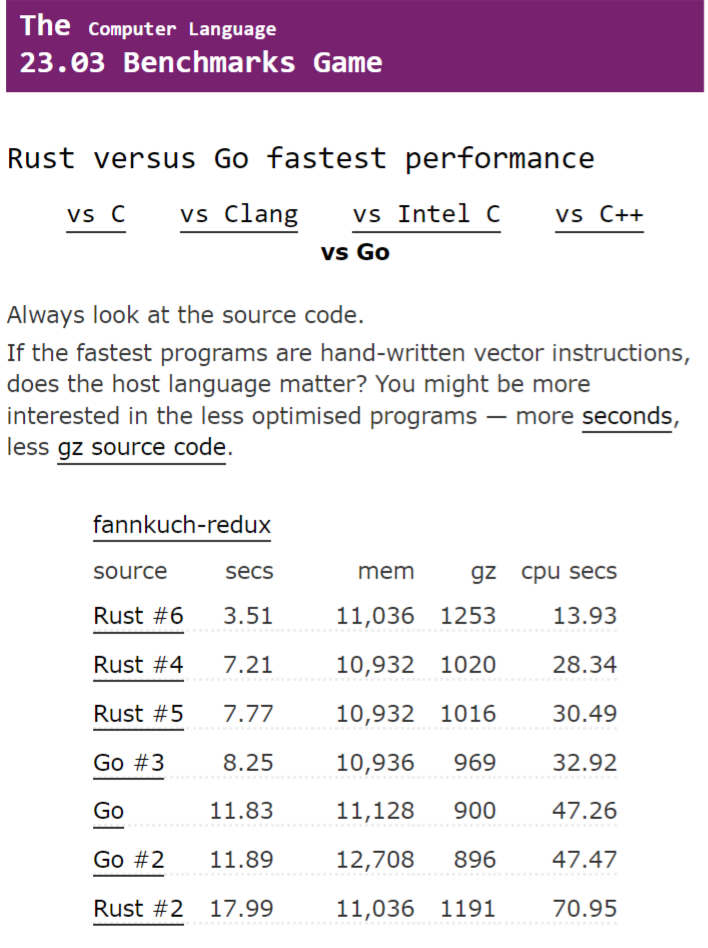
One of the reasons contributing to Rust being faster than Go is that it doesn’t use garbage collection ‒ a mechanism that automatically releases memory that is no longer needed. In brief, when the garbage collector is running, there are pauses in program execution. Although these pauses are very short and unnoticeable to users, they might be crucial for high-load systems, like real-time apps with a great number of users.
Here is what Matt Asay from Amazon writes about Rust in his blog article titled Why AWS Loves Rust, and How We’d Like to Help:
“Here at AWS, we love Rust, too, because it helps AWS write highly performant, safe infrastructure-level networking and other systems software. … we also use Rust to deliver services such as Amazon Simple Storage Service (Amazon S3), Amazon Elastic Compute Cloud (Amazon EC2), Amazon CloudFront, Amazon Route 53, and more. Recently we launched Bottlerocket, a Linux-based container operating system written in Rust.”
To sum it up, when it comes to Go vs Rust performance and speed, we can claim that Rust wins this battle.
Concurrency
Concurrency is an ability of a program to deal with multiple tasks simultaneously. For Go, concurrency is achieved with goroutines, lightweight threads managed by Go runtime, and channels, pipelines that ensure communication between goroutines. When it comes to Rust, concurrency is implemented via Async/Await paradigm and threading. Goroutines are very similar to threads, but they use less memory, which helps run concurrent code faster and more efficiently.

Overall, we can summarize that both languages ensure efficient implementation of concurrent programming, so here is a draw.
Memory safety
Although Go was designed with simplicity in mind, it is considered to be a memory-safe programming language, yet not reaching the same level as Rust. Undoubtedly, Go also offers advanced safety features, like garbage collection, error handling, and more, that help avoid hidden bugs, and prevent memory leaks and security vulnerabilities.
When talking about Rust, memory safety and thread safety are guaranteed with an ownership model (a set of rules governing how memory is managed), which allows developers to create safe and efficient code. Eliminating the need for garbage collection (like in Go), the model ensures a high level of protection against memory-related bugs without sacrificing performance.
Taylor Thomas, Sr. Software Engineer at DeisLabs, Azure, shares his thoughts about Rust:
“The other reason we chose Rust was its strong safety and security guarantees. Like most Rust newbies, we started off cursing Rust’s borrow checker (which statically enforces many of Rust’s safety guarantees) and sometimes fighting with it for hours. But after we started to get a better understanding of how to code things, we realized how many bugs and problems the compiler was saving us from.”
To wrap up, Rust is an absolute leader in terms of safety.
Learning curve
When it comes to mastering the language, Go wins the battle. We can’t claim that it’s an easy programming language, but it’s definitely much easier to understand and learn without having any prior experience.
Here’s what Glen Balliet, Engineering Director of loyalty platforms at American Express, says about Go:
“What makes Go different from other programming languages is cognitive load. You can do more with less code, which makes it easier to reason about and understand the code that you do end up writing.
The majority of Go code ends up looking quite similar, so, even if you’re working with a completely new codebase, you can get up and running pretty quickly.”
As for Rust, it should be noted that although being harder to master, Rust allows programmers to build more reliable, secure, and high-performing systems in return. Despite a steeper learning curve, Rust doesn’t fall behind and, just like Go, becomes a popular choice among global corporations.
Go and Rust use cases
In terms of Go vs Rust popularity, both languages are commonly used in various domains. Go’s simplicity and developer-friendly syntax make it a great fit for developing scalable web services, network programming, and microservices. On the other hand, Rust’s focus on performance and memory safety makes it an excellent option for low-level systems programming, embedded systems, and projects that require precise management of resources. In our recent article, we have covered the most popular Go and Rust use cases, so feel free to check them out.
Finding the Perfect Fit: Select Go or Rust for Different Industries Wisely
But no one said you can’t use both languages at the same time. There are many famous companies that use both Rust and Go for different purposes, and Dropbox is one of them. They decided to migrate their backends from Python to Go to improve concurrency support and execution speed. At the same time, Dropbox used Rust to rewrite the sync engine.
Now, it’s time to discover other companies adopting Go and Rust.
Companies using Go
The list of companies using Golang includes Google, PayPal, Meta, Netflix, Salesforce, and more. For example, Uber picked the Go programming language to shift from a monolithic architecture to microservices because it ensures developer productivity, high performance in throughput and latency, and superb reliability.
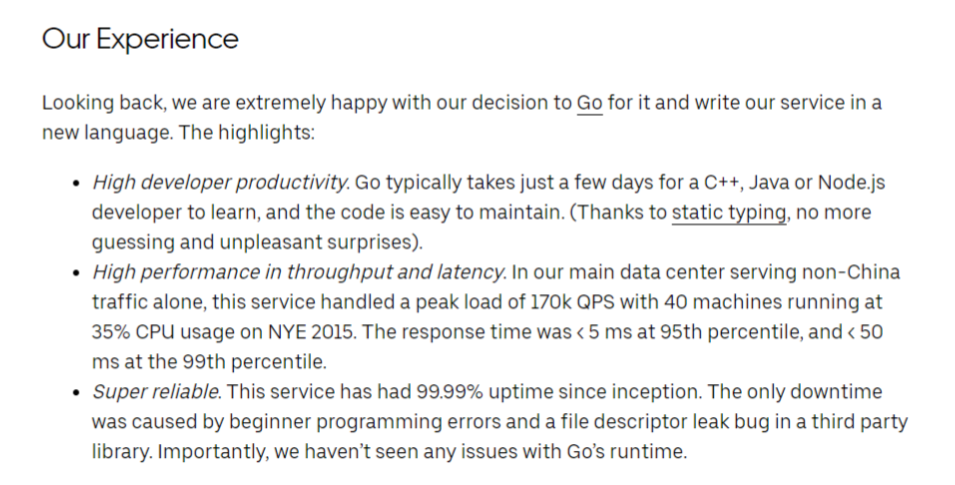
One more case is PayPal, a world-known payment platform. Due to simple code layouts, goroutines, and channels, Go was an ideal solution to simplify and modernize the platform and reduce the time to market for new apps.
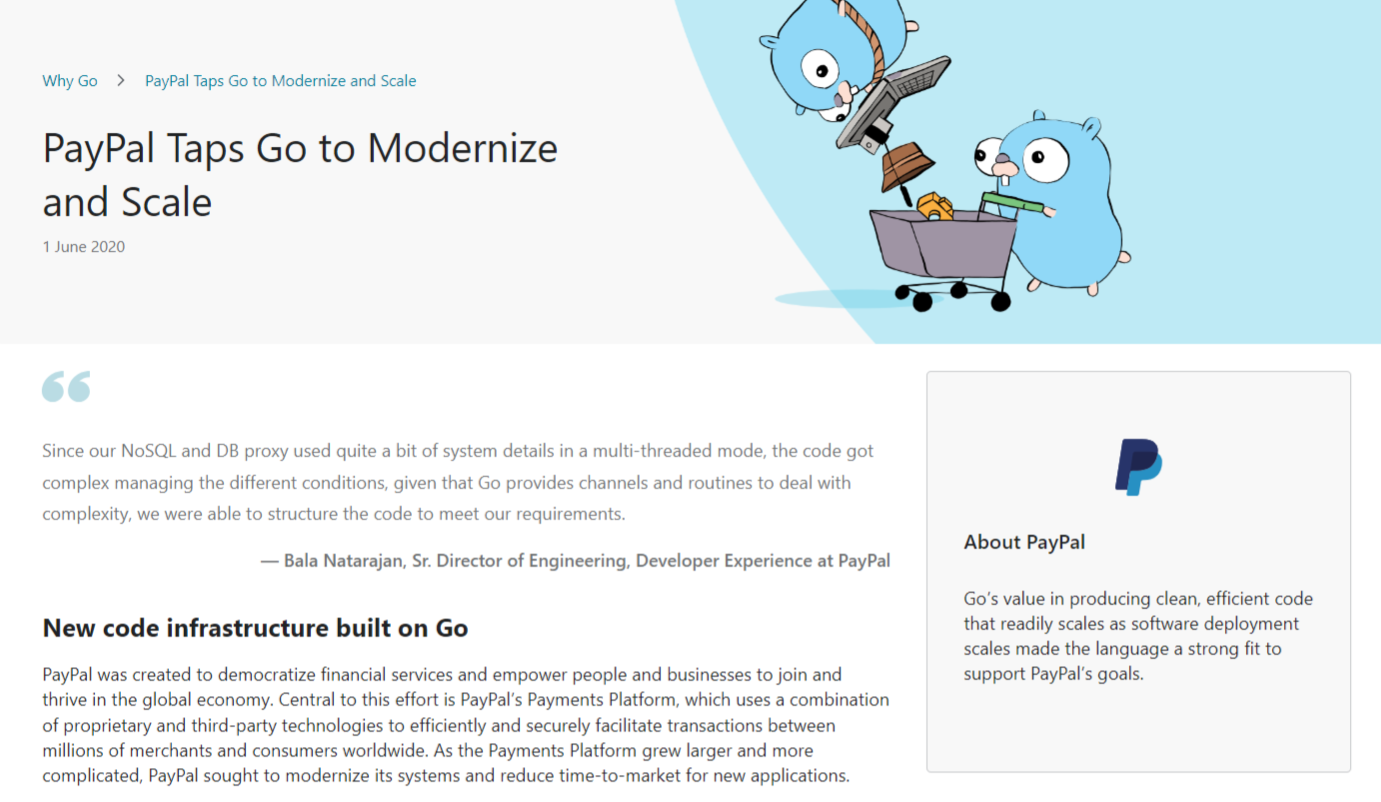
Companies using Rust
Among companies utilizing Rust, we can find such tech giants as Mozilla, Amazon, Coursera, Cloudflare, and others. Mozilla used Rust to build the Servo project, a web browser engine that helps developers deliver content and apps using web standards. Decent memory safety features and concurrency capabilities made Rust a perfect fit for systems requiring efficient parallel processing of web content, like Servo.
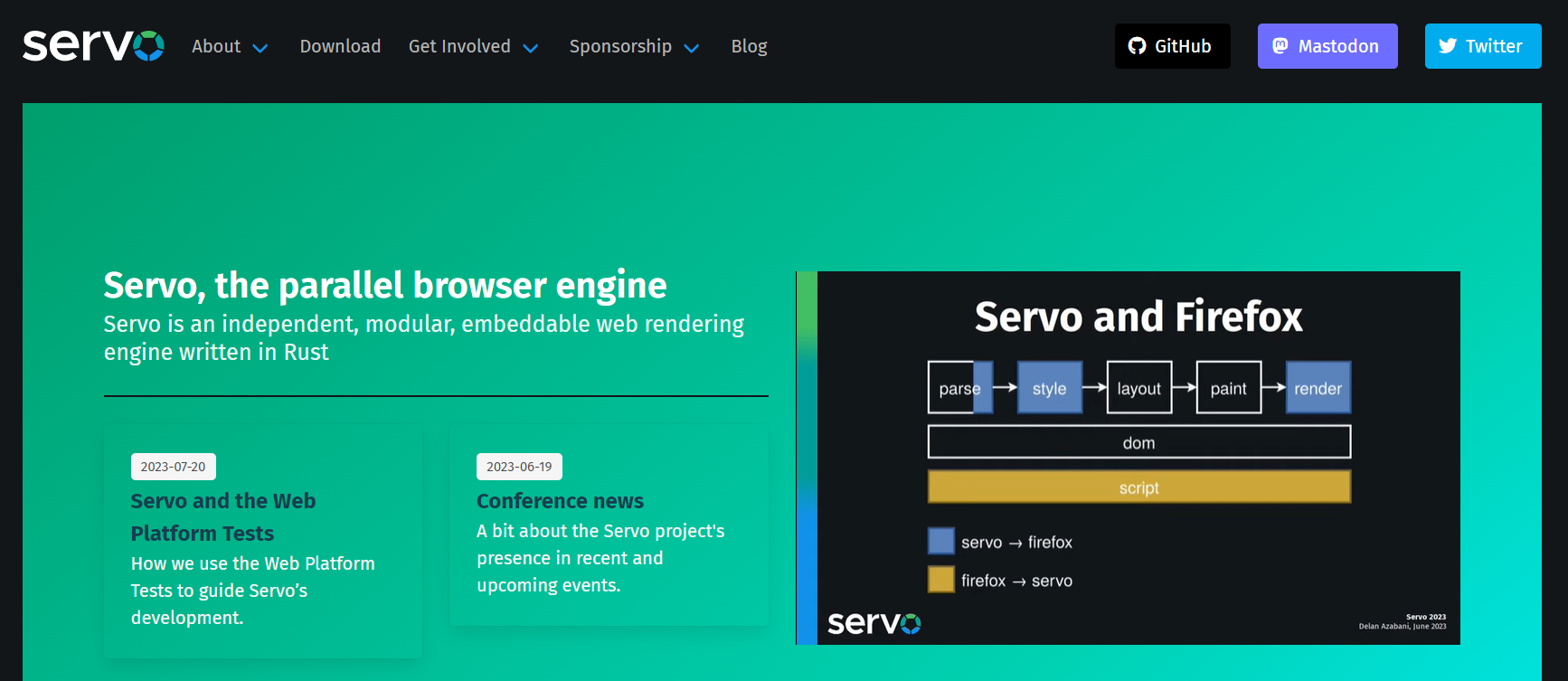
A communication platform Discord offering voice, video, and chat services adopted Rust to ensure high performance, latency, and reliability, crucial for real-time systems. It allowed developers to fix latency spikes and enhance user experience.

These examples prove that there is no universal rule on what programming language to choose to build your software since each project has its specific needs and technical requirements. However, the more you know about either of the languages the easier your choice is.
Go vs Rust, what to choose?
Here’s a short checklist to bring you one step closer to the right decision.
- Choose Go when:
✅ You plan to develop cloud-native microservices or migrate to the cloud.
✅ Your primary focus is the speed of development, not the speed of execution.
✅ Your software solution requires multiple tasks to be executed concurrently.
✅ You’re looking for technology with straightforward code and developer-friendly syntax.
- Choose Rust when:
✅ Memory safety is your core priority.
✅ You need to build a high-performing and reliable app.
✅ You are not in a hurry and don’t expect fast results.
✅ You develop a system that requires smooth integration of software and hardware, like IoT.
Be it a simple Go or a more complex tech like Rust, you need professionals on board to achieve success. With Bridge, you can find qualified engineers with ease. We offer two types of services you can choose from.
In case you decide to deal with the hiring on your own, we can simplify the process for you by providing a list of pre-screened candidates within our sourcing-as-a-service offering. With us, you can get from 15 to 30 candidates for potential hires thoroughly vetted by our tech-savvy recruiters.
Another option is IT staffing where we help you find and hire tech talent covering tedious recruitment tasks, paperwork, team setup, payroll operations, and more. Using our clients-only platform, you remain in full control over the hiring process communicating with candidates and scheduling interviews.
Work with experienced recruiters from Bridge
When searching for tech talent, be it Rust, Go, or any other programming language, you have to be sure you hire professionals in the field, which might be a challenge for a non-technical person. With Bridge, it will be effortless for you. We use a proprietary data engine that helps to automatically narrow the list of candidates and make the outreach five times faster in comparison to manual processes. Next, our tech-savvy recruiters communicate with candidates in their native language and thoroughly vet their skills and work experience.
Whether you choose Rust or Go, Bridge will help you hire skilled developers!
